Safety And Health
The 2020 Covid-19 Pandemic
The Delta variant is ragging through the unvaccinated population and steps are necessary to try and get it under some kind of control as of August 9, 2021. The science community is encouraging everyone to get the vaccine and most Americans should voluntarily wear a mask when indoors whether vaccinated or not. The safety of our members is always at the top of what we do as a Union, so we ask that you be smart so we can end this madness. Recent split views by many of the American population in regards to mask wearing and vaccine mandates have left us in a most challenging situation. The video below is just one of many from a variety of sources that speaks to where we as a nation are on this second week of September 2021.
A reminder “This webmaster, the IAMAW, and IAM Local Lodge 2297 does not necessarily endorse or always agree with the views or statements made or expressed by any third party entity. We try to offer as close as possible real time information. We do not accept responsibility for any third party misinformation”.
https://youtu.be/ar1cCRStUes
IAM Coronavirus Resource Center

AFL-CIO-issues-workplace-health-and-safety
The Safety Committee is one of the most important committees established in the Local Lodge. The Union is committed to worker safety on and off the job. We are currently partnering with our Employers, workforce and OHSA to drive toward “STAR” status at the FRC East aboard MCAS Cherry Point, N.C.
OSHA Job Safety And Health It’s The Law
IAM Safety And Health
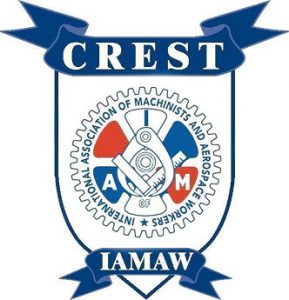
Credit for this post goes to Union Safety Representative, Billy Chapman. The safety and health of our members is our # 1 concern and we are willing to partner with any entity to achieve success.
- VPP Where We Came From
In the beginning we worked in a facility where the “Mission” took precedence over quality, cost, and safety. Our only objective was to support the War Fighter by returning product to the fleet on time. We fulfilled our obligation by working excessive amounts of overtime to meet the schedules. The end results were always the same, we made the schedule but at a cost, we accumulated a large number of injuries to the production work force.
Then we went through a transition period where “Mission and Quality” were synonymous, but cost and safety were not as highly regarded in this phase of growth. Quality became a target because quality issues became rework issues which affected scheduling and this affected the mission.
During this time countless hours of overtime were being worked and we were still having many injuries. Finally we came to the stage with the most change and the one with the most added value, cost. Political protocol mandated smaller operating budgets which affected every facet of the business. There was a root cause analysis performed for quality, training, tooling, housekeeping, safety…etc.
At this time the VPP program was adopted and put into practice and has proven to be of added value. Shortly thereafter the 5s +1 program was implemented and we began working as a group to improve safety. We all worked diligently to achieve the Bronze certification and it happened. We were then asked to participate further to reach the goals for the silver certification, and once again we were victorious. It was at this time that management recognized a change in culture and that we were working hard together to achieve each and every goal put before us. We were then asked to work hard towards the gold certification. Through hard work and diligence this was also accomplished.
Then there was the OHSA partnership, we worked towards a partnership with OHSA and achieved this also. Management signed a two year contract with Federal OSHA making this the first time that OSHA has partnered with another federal entity. We have met with every challenge put before us and we have achieved our goals. Management was equally impressed with our achievements and has promised 24M dollars for safety to be used over the next two years for improvements enterprise wide.
- VPP Where We Are
Our goals have been met, we have achieved Gold Certification and now we are working hard to maintain this status. We achieved our goals with the 5s +1 program. The 5s portion removed unnecessary materials, tools, and organized what was necessary, and ultimately cleaned our work place. The +1 portion of the program identified unsafe conditions within our safe sites, prioritized the issues via a RAC and systematically made the repairs possible. This must also be sustained to keep moving forward, to achieve our primary goal. Our greatest goal, that out ways them all, is the change in culture that we will have to achieve. Without this we would not achieve any of our goals. Therefore this achievement must be sustained and grow if we are to be successful.
- VPP Where We Are Going
Star certification is what we have been working for and what we must achieve, and through sustainment we will reach this goal. To achieve Star Certification the facility must be OSHA compliant and this means participation from all employees.
- Renewing Our Commitment
Local Unions and Management Officials along with their OSHA Partners recommit the pledge to improve safety within the workplace and work to eliminate all injuries and accidents once and for all. Below are pictures of the signing of the document renewing that effort.
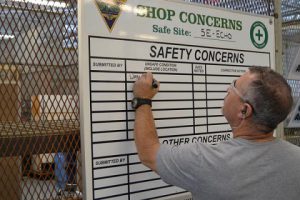
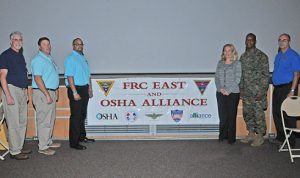
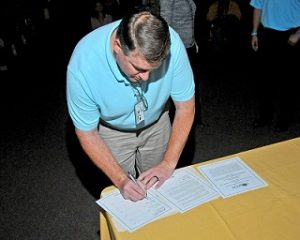
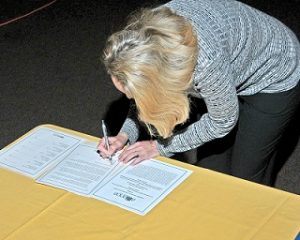
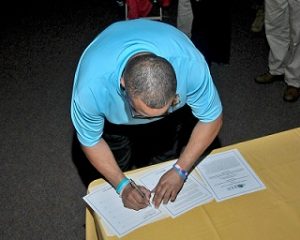
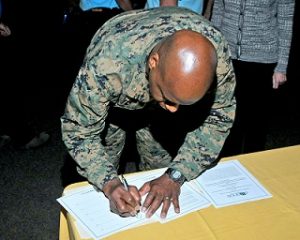
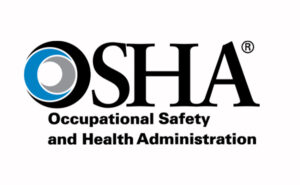
The Occupational Safety & Health Administration 200 Constitution Ave. NW, Washington, DC 20210
800-321-OSHA (6742) TTY
OSHA Raleigh Area Office 4407 Bland Road Somerset Park Suite 210 Raleigh, North Carolina 27609
(919) 790-8096 – (919) 790-8224 FAX
Helpful Hints
- Walking-Working Surfaces and Personal Fall Protection Systems. Walking-Working-Surfaces
Preparing for the Warmer Months Now that the snow shovels, snow blowers, ice melt, anti-skid material and the clothing are no longer needed it’s time to make sure the lawn equipment is ready but more importantly to make sure “you” are prepared for the warmer months to come.
Heat related injuries and illnesses are a very real and present danger if you are not prepared. It’s easy to be distracted by the joy of warmer weather and fixate on the tasks outside because we have been inside for what seems to be an endless winter. All too often the effects from being outside for extended periods of time, when we’re not as physically ready as we could be and not hydrating properly, come on without notice and result in a call to 911 for help.
Preventing this scenario is not that difficult as long as you think about it before heading outside. Figure water in as being more important than any tool required for the work to be done. Let someone know that you are working outside, better yet ask for help in your tasks because there is more safety in numbers. Plan water/rest breaks using your cell phone alarm clock and have it with you while you’re outside so that if the worst case scenario happens, hopefully you can summon help.
Your health and wellbeing are more important than your task. If your job requires that you work outside or are exposed to excessive heat environments OSHA has a lot of information regarding the preventive and reactive measures that can be taken for the prevention and response of heat related injuries and illnesses. Click on the link below to the OSHA website page:
OSHA even has a “Heat Safety Tool” smart phone heat risk calculation application that can be loaded on your smart phone to calculate risk levels and give preventative measures for working in the heat. The following link will take you to the OSHA website page where it can be downloaded:
Remember, when the temperature rises; drink plenty of water, take plenty of breaks, make sure someone knows you’re working outside, have some way of summoning help, ask for help and enjoy your time outdoors!
Tornadoes are nature’s most violent storms. Spawned from powerful thunderstorms, tornadoes can cause fatalities and devastate a neighborhood in seconds. A tornado appears as a rotating, funnel-shaped cloud that extends from a thunderstorm to the ground with whirling winds that can reach 300 miles per hour. Damage paths can be in excess of one mile wide and 50 miles long. Every state is at some risk from this hazard. Some tornadoes are clearly visible, while rain or nearby low-hanging clouds obscure others. Occasionally, tornadoes develop so rapidly that little, if any, advance warning is possible. Before a tornado hits, the wind may die down and the air may become very still. A cloud of debris can mark the location of a tornado even if a funnel is not visible. Tornadoes generally occur near the trailing edge of a thunderstorm. It is not uncommon to see clear, sunlit skies behind a tornado.
Tornado Safety
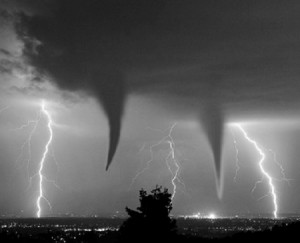
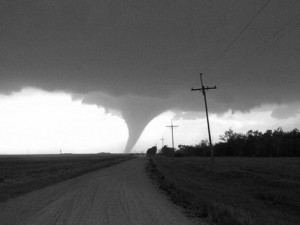
OSHA.gov/Publications/Safe Driving
5 Rules to follow when driving in snow
- Don’t drive Yep, leave the car in the garage or the driveway. The best way to deal with the hazards of driving in snow is to completely avoid it.
- Go slow Anytime you’re up against conditions that destroy traction, you want to drop the speedometer. It might feel silly to be poking along at 30 mph in a 65 zone, but speed truly is the enemy in snowbound weather. You’ll get there.
- Know your vehicle Many newer cars come with anti-lock braking (ABS) and electronic stability or traction control (ESC). Many older cars don’t. These systems are useful in snowy, icy conditions, but they aren’t foolproof. If you have ABS, you have to understand how to use it. Let’s say you’re driving on a snowy road and you need to brake rapidly to avoid an obstruction. The key is to break HARD, engaging the ABS, which will prevent your wheels from locking up. Then you simply need to steer smoothly around the obstruction and ease off the brakes when clear, being careful to avoid too much throttle. Traction control can help you avoid a skid, but it won’t help you out if you’re driving at an excessive speed. Four-wheel-drive and all-wheel-drive will assist in maintaining traction and getting through heavier patches of snow. But neither will save your skin if you get into a dangerous slide or skid. Additionally, if you’re car is in bad condition or doesn’t contain winter-weather supplies, it’s better to find another way to get around.
- Know what to do if your car does skid Steer into, not against, the skid and let off the throttle to get the car back under control. This “don’t fight it” approach should be effective with front- and AWD vehicles. If you have rear-wheel-drive, you may need to counter steer to avoid having the back end of the car slide, but this is hard to get right. Generally speaking, rear-wheel-drive cars and snow or ice don’t get along well, so it’s best to keep them in the garage. Especially, anything with gobs of horsepower. And of course the best way to avoid skidding is to drive very slowly in the first place.
- Be constantly aware of white outs and black ice Sometimes, you get caught on the road when the snow starts coming down hard. You need to reduce speed and keep your lights on (or turn them on if they’re off), maintaining what might seem like an excessive distance — I recommend at least 3-4 car lengths — between you and the car in front of you. If the snow “whites out” your vision, then you should: • Immediately slow down and put your hazard blinkers on • Don’t use bright lights — they’ll reflect back • Come to a stop if traffic has ceased moving • Pull over to the side of the road if possible, or look to safely exit the highway • Stay in your car until conditions improve — never leave you vehicle in a heavy snow conditions Black ice is much trickier. This is ice that’s formed on roads and can’t be seen. You really have to aware of the conditions that create black ice. A daytime snowstorm that lets up, allowing for some melting, can lead to black ice when temperatures fall after dark. Mixed snow/ice/sleet can yield black ice. And elevated bridges can ice much sooner than roadways, so you need to take extra caution when crossing them.
